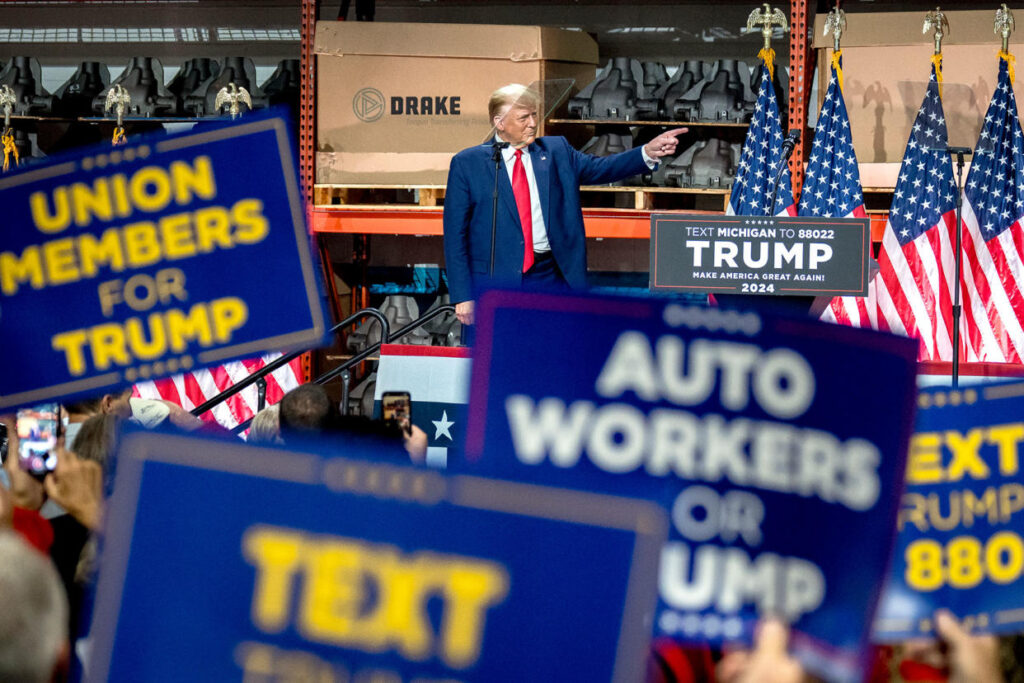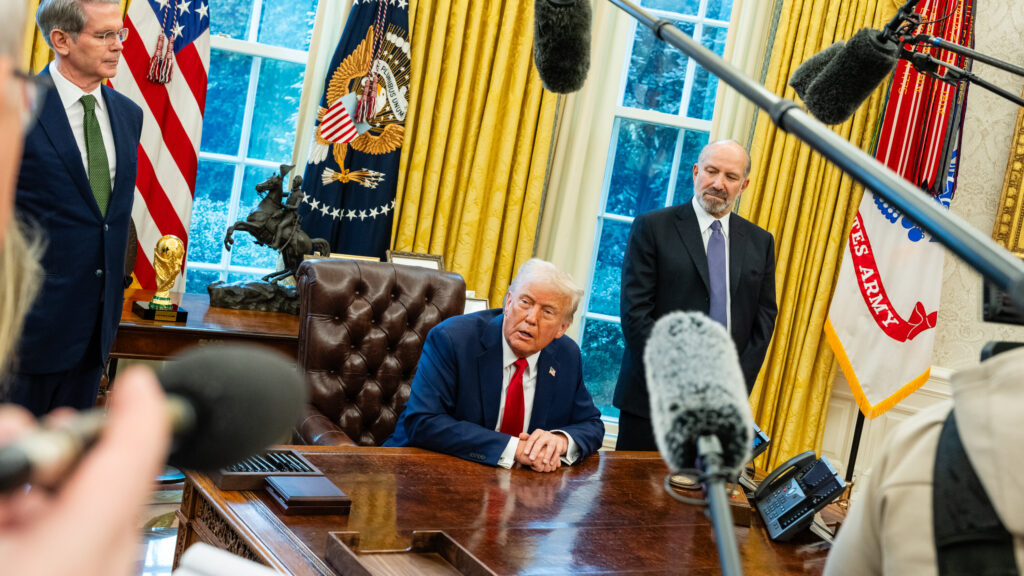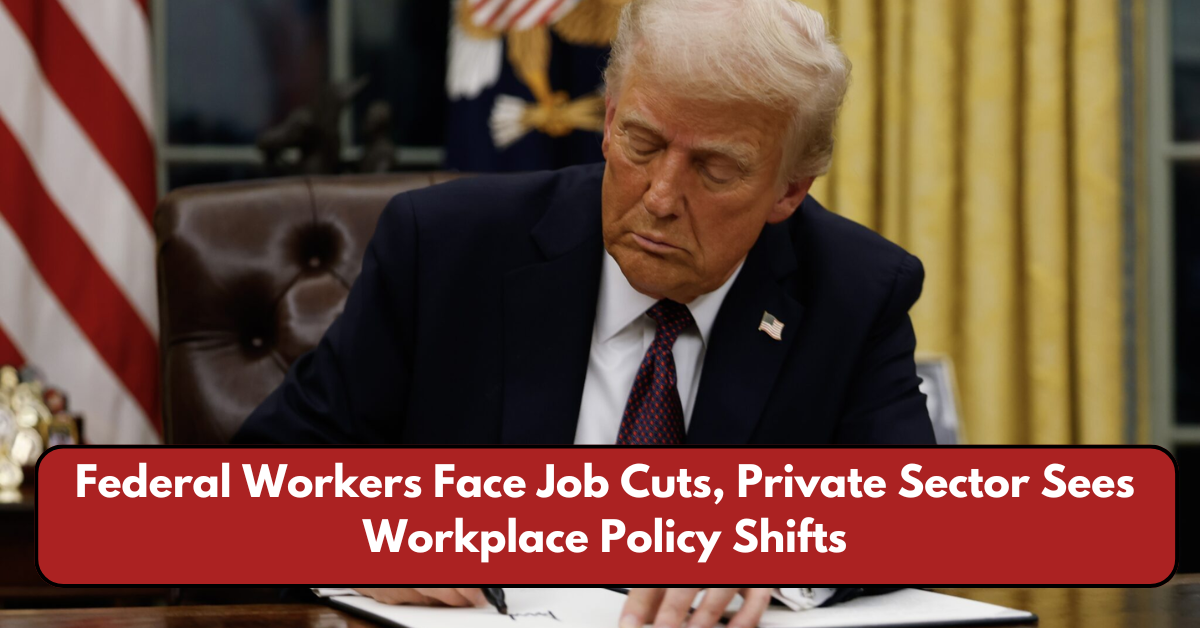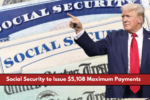The Trump administration has initiated major reforms in employment and labor laws, sparking debates over worker protections, government efficiency, and the future of federal employment.
These changes—ranging from mass terminations in the federal workforce to the elimination of diversity, equity, and inclusion (DEI) initiatives—have drawn both praise and criticism.
Here’s a detailed look at the key policy changes, their impact on workers, and the controversies surrounding these decisions.
Federal Workforce Overhaul: Job Cuts and Schedule F Returns
One of the most significant changes implemented by the Trump administration is a massive restructuring of the federal workforce.
- Reinstating “Schedule F”: This classification, first proposed in 2020, removes job protections for thousands of federal employees in policy-related positions, making them easier to fire. Critics argue that this move politicizes the civil service, while supporters say it allows for greater accountability and efficiency.
- Federal Hiring Freeze: The administration has implemented a government-wide hiring freeze, preventing agencies from replacing workers who retire or resign.
- Mass Terminations in Key Agencies: Several federal agencies, including the National Science Foundation (NSF) and U.S. Agency for International Development (USAID), have seen large-scale layoffs, particularly affecting employees in probationary periods.
Official Federal Workforce Rules: opm.gov

Impact on Federal Workers
Thousands of government employees have been affected by sudden terminations, with reports emerging of longtime workers being dismissed without notice.
- At Lake Clark National Park, a 20-year veteran employee lost his job as part of a broader crackdown on probationary workers.
- The NSF reclassified hundreds of employees as probationary without prior notice, leading to 170 job losses.
- A federal judge approved the administration’s move to downsize USAID staff, impacting both domestic and international employees.
Federal Employee Rights: afge.org
Elimination of DEI Programs & Changes in Hiring Practices
In another controversial move, the Trump administration has rolled back diversity, equity, and inclusion (DEI) initiatives in the workplace.
Key Executive Orders on Workplace Diversity
- Rescinding Executive Order 11246
- Originally signed in 1965 by President Lyndon B. Johnson, this order required federal contractors to implement affirmative action policies.
- The Trump administration revoked this mandate, stating that employment should be strictly merit-based without consideration of race, gender, or identity factors.
- Signing Executive Order 14173
- Titled “Ending Illegal Discrimination and Restoring Merit-Based Opportunity”, this order prohibits private companies receiving federal contracts from implementing DEI programs.
- It eliminates certain equal opportunity requirements for federal contractors, sparking concerns among civil rights advocates.
Workplace Equal Opportunity Rules: eeoc.gov
Supporters vs. Critics
- Supporters argue that DEI programs unfairly prioritize race and gender over qualifications and that these changes restore a merit-based system.
- Critics warn that these actions roll back decades of progress on workplace equality and disadvantage underrepresented groups in federal employment.
Changes to Union and Worker Protections
The administration has also introduced major reforms in labor unions and worker rights, including:
- Stronger Restrictions on Federal Employee Unions
- The government has limited collective bargaining rights, making it harder for federal workers to negotiate wages and benefits.
- “Right to Work” Expansion
- The administration has pushed for nationwide right-to-work laws, which weaken unions by prohibiting mandatory union dues for workers in unionized workplaces.
Impact on Workers and Unions
Labor organizations, including the American Federation of Government Employees (AFGE), have filed lawsuits to challenge these policies.
- Union leaders warn that these changes will reduce worker protections and increase job instability.
- Business groups argue that weakening unions makes the labor market more flexible and competitive.

The Political Debate: Efficiency vs. Worker Protections
These sweeping changes have fueled intense political debates.
- Conservative lawmakers and business leaders praise the administration’s efforts to reduce government inefficiency and promote merit-based employment.
- Democratic lawmakers and labor unions argue that the policies erode worker rights and politicize the federal workforce.
Congressional Labor Policy Debates: congress.gov
Public Reaction
Many federal employees have expressed concerns over job security, while some business groups support the administration’s push for deregulation and labor reform.
What This Means for Workers & Employers
These changes will have lasting impacts on both federal employees and private sector workers.
For Federal Workers
- Job security is now more uncertain, especially for those in policy roles.
- Union power is diminishing, making it harder to negotiate benefits.
- Hiring freezes and layoffs could result in reduced government efficiency.
For Private Employers & Workers
- Federal contractors may no longer have to comply with DEI hiring requirements.
- Right-to-work laws could weaken union influence, impacting wages and benefits.
- Changes in labor laws may shift workplace policies nationwide.
Employment Law Updates: nlrb.gov
Conclusion: A New Era for Employment Law?
The Trump administration’s changes to employment and labor law represent one of the biggest shifts in workforce policy in recent years.
While supporters argue these reforms promote efficiency, critics warn they could dismantle worker protections. As lawsuits and political battles unfold, the long-term impact on employment rights and labor practices remains uncertain.
For official updates, visit dol.gov or consult a labor rights expert.
This article has been carefully fact-checked by our editorial team to ensure accuracy and eliminate any misleading information. We are committed to maintaining the highest standards of integrity in our content.

A senior at Yale-NUS College with interests in developmental and labour economics, as well as creative non-fiction and poetry. Currently, I’m studying as an Economics major and an Arts and Humanities minor (focusing on Creative Writing) with heavy involvement in the Singaporean journalism scene and involved in research on economic history and educational policy. I’m working as an author for The Octant, Yale-NUS’ student publication, as a writer for Wingspan, Yale-NUS’ alumni magazine, and as a tutor for the NUS Libraries Writer’s Centre. | Linkedin




